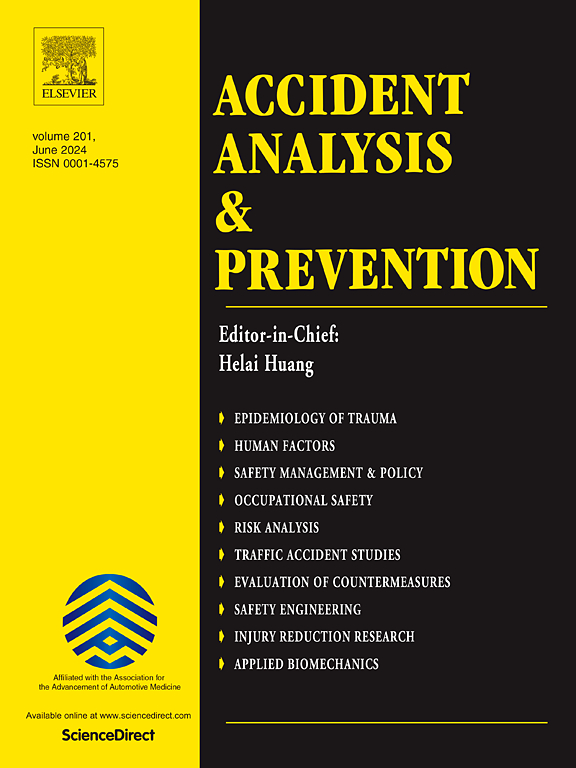司机需要控制吗?探索不同危险可见度情景下人机协作模式对驾驶行为和主观感知的影响
IF 5.7
1区 工程技术
Q1 ERGONOMICS
引用次数: 0
摘要
在完全实现自动化之前,自动驾驶汽车(AV)必须经历人机协作驾驶的过渡阶段。因此,设计合适的人机界面(HMI)协作模式是确保驾驶安全和用户体验的关键。然而,现有研究很少考虑不同危险可见度场景下的人机协作模式设计。在本研究中,我们进行了一项模拟驾驶实验(N = 28),探讨了三种基于人机界面的协作模式(HMI1、HMI2 和 HMI3)在两种危险可见度场景(可见危险和不可见危险)下对驾驶行为和主观感知的影响。三种协作模式的设计主要基于不同程度的可解释性和可控性。结果表明,在隐形危险情景下,驾驶员表现出的情景意识和偏好明显低于可见危险情景。不同协作模式下的人机界面设计对驾驶员的态势感知、认知工作量、信任度和注意力分配都有显著影响,其中人机界面2(高可解释性、视听辅助决策)的满意度最高。特别是在隐形危险场景中,HMI2 显著提高了驾驶员的情境意识和注意力,同时将认知工作量降至最低。研究还表明,在自动驾驶过程中,驾驶员需要一定的控制感,但这并不一定意味着他们需要直接参与决策。相反,可以通过增强人机界面的可解释性来培养控制感。这些发现为设计 AV 中的人机界面以提高驾驶安全性提供了宝贵的启示。本文章由计算机程序翻译,如有差异,请以英文原文为准。
Is control necessary for drivers? Exploring the influence of human–machine collaboration modes on driving behavior and subjective perception under different hazard visibility scenarios
Before full achieving automation, Autonomous Vehicle(AV) must undergo a transitional phase of human–machine collaborative driving. Therefore, designing appropriate Human-Machine Interface (HMI) modes of collaboration is key to ensuring both driving safety and user experience. However, existing research has rarely considered the design of human–machine collaboration modes under different Hazard Visibility scenarios. In this study, we conducted a simulated driving experiment (N = 28) to explore the effects of three HMI-based collaboration modes (HMI1, HMI2, and HMI3) on driving behavior and subjective perception under two hazard visibility scenarios (visible and invisible hazard). The designs of the three collaboration modes were primarily based on varying levels of explainability and control. The results show that in the invisible hazard scenario, drivers exhibited significantly lower situation awareness and preference compared to the visible hazard scenario. The design of HMI in different collaboration modes significantly influences drivers’ situation awareness, cognitive workload, trust, and attention distribution, with the highest satisfaction reported for HMI2 (high explainability, AV-led decision-making). Particularly in the invisible hazard scenario, HMI2 significantly improved drivers’ situation awareness and attention while minimizing cognitive workload. The study also indicates that during autonomous driving, drivers require a certain sense of control, though this does not necessarily mean they need to directly participate in decision-making. Instead, a sense of control can be fostered by augmenting the explainability of the HMI. These findings provide valuable insights for the design of human–machine interfaces in AV to enhance driving safety.
求助全文
通过发布文献求助,成功后即可免费获取论文全文。
去求助
来源期刊

Accident; analysis and prevention
Multiple-
CiteScore
11.90
自引率
16.90%
发文量
264
审稿时长
48 days
期刊介绍:
Accident Analysis & Prevention provides wide coverage of the general areas relating to accidental injury and damage, including the pre-injury and immediate post-injury phases. Published papers deal with medical, legal, economic, educational, behavioral, theoretical or empirical aspects of transportation accidents, as well as with accidents at other sites. Selected topics within the scope of the Journal may include: studies of human, environmental and vehicular factors influencing the occurrence, type and severity of accidents and injury; the design, implementation and evaluation of countermeasures; biomechanics of impact and human tolerance limits to injury; modelling and statistical analysis of accident data; policy, planning and decision-making in safety.
 求助内容:
求助内容: 应助结果提醒方式:
应助结果提醒方式:


